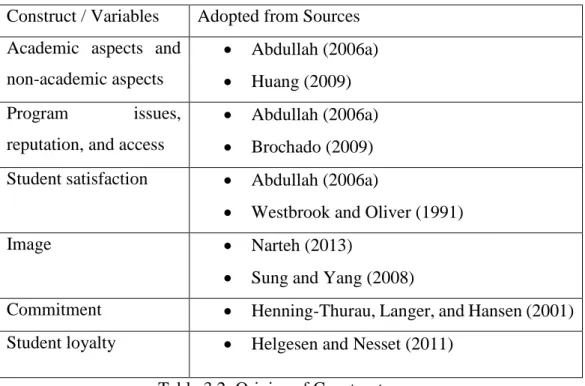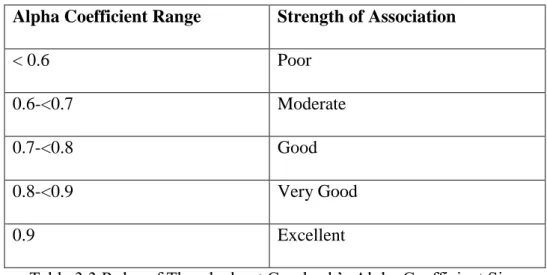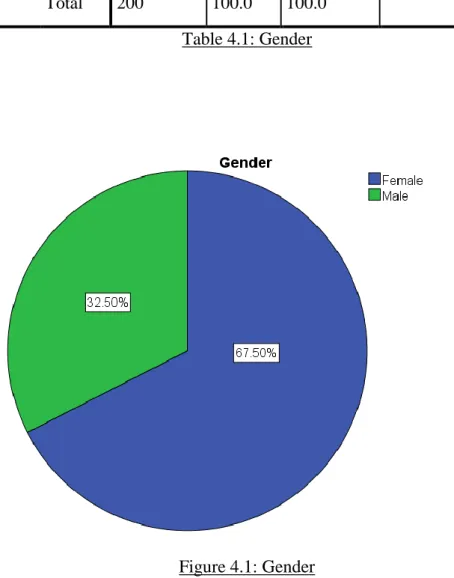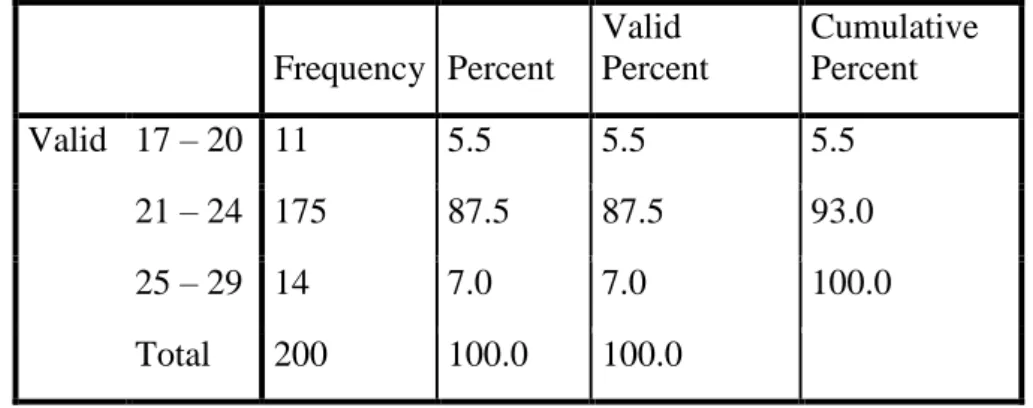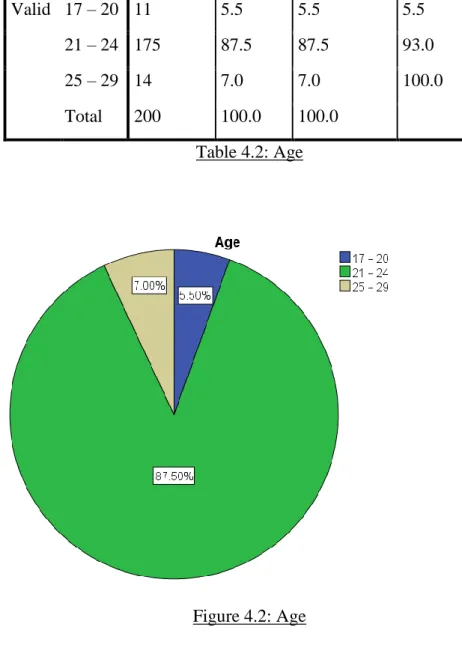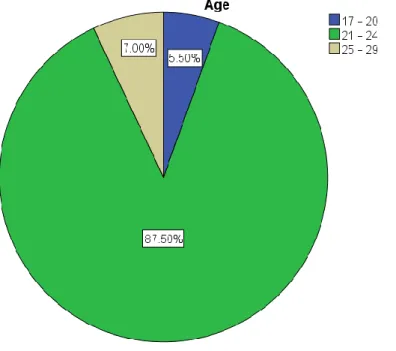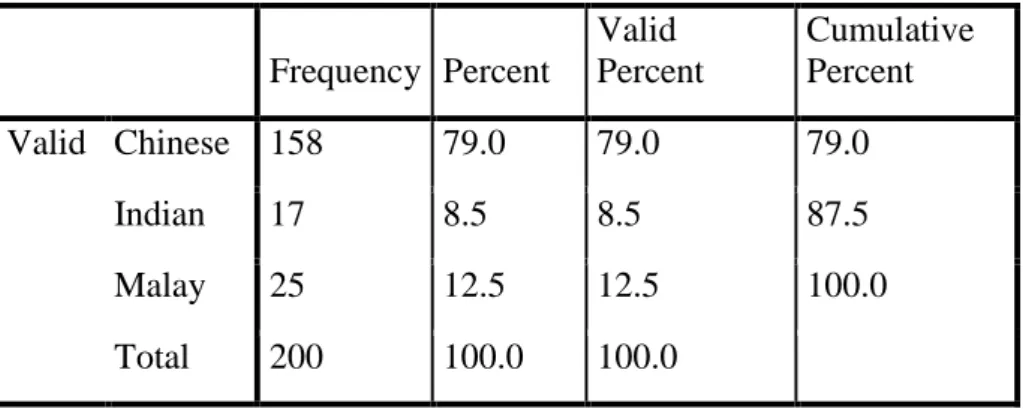INTRODUCTION
Introduction
This chapter consists of several sections, including the background of the research, the problem statement, the research objectives, the research questions, the research hypotheses, the meaning of the research and the division of the chapters.
Research Background
- Higher Education
- Higher Education in Malaysia
- Private Universities
- Broad Academic Offerings
- Faculty Focus on Research
- Name Recognition
- Private Universities in Malaysia
- Student Satisfaction
- Institutional Image
- Student Commitment
- Student Loyalty
Education is one of the most important industries and plays an important role in national development. It is important to conduct a research on higher education in Malaysia because of liberalization and globalization of these services in Malaysia. One of the objectives of this study is to determine the relationship between university image and student loyalty.
Problem Statement
First, research on student satisfaction, institution image and student engagement are the important independent variables to measure student loyalty. This research is able to sort out the empirical research on the specific role of student loyalty of local private universities. Finally, there is a lack of research on student loyalty to the local private sector and attracting new potential students to study in Malaysia's private universities.
Research Objectives
- General Objective
- Specific Objective
To determine the relationship between reputation and local student loyalty in private universities of Malaysia. Determining the relationship between access and local student loyalty in private universities of Malaysia. To determine the relationship between local student engagement and student loyalty in private universities of Malaysia.
Research Questions
Determining the relationship between program difficulties and local student loyalty in private universities of Malaysia. To determine the relationship between overall satisfaction of local students and student loyalty to private universities in Malaysia. Is there a significant relationship between reputation and student loyalty to private universities in Malaysia?
Hypotheses of the Study
Significance of the Study
The research findings will provide valuable insight to the government or universities, especially those in the private sector, so that they can enhance the service quality of higher education institutions. There is no doubt that the management of higher education institutions is difficult due to reduced government funding as well as fierce competition among higher education institutions affecting the ability to attract the best students. In order to answer the challenges, this study has sought for a better understanding of the choice of prospective students for the choice of institutions of higher education, in order to identify the primary factors that influence the choice of students for institutions of higher education. high and thus fulfill the satisfaction of the students.
Chapter Layout
- Chapter One: Research Overview
- Chapter Two: Literature Review
- Chapter Three: Research Methodology
- Chapter Four: Data Analysis
- Chapter Five: Discussion, Conclusion and Implication
This chapter discusses the research questions to be answered, the hypotheses to be tested and the significance of the research. Chapter two consists of an overview of information from previous studies in the relevant journal articles related to this study. This chapter discusses the pattern of results and the analysis of the results relevant to the research questions and hypotheses.
Conclusion
This chapter explains a summary of the statistical analyses, a discussion of the main findings to support the research objectives and hypotheses, limitations of the study, and recommendations for future research.
LITERATURE REVIEW
- Introduction
- Review of the Literature
- Student Loyalty
- Service Quality
- Service Quality in Higher Education Sector
- Student Satisfaction
- Institutional Image
- Student Commitment
- Conceptual Framework
- Development of Hypotheses
- Student Satisfaction and Student Loyalty
- Institutional Image and Student Loyalty
- Student Commitment and Student Loyalty
- Conclusion
Abdullah (2005) developed the Higher Education Performance Scale (HEdPERF), a scale to assess perceived service quality in Malaysian higher education. All these studies recommend that the dimensions of higher education service quality vary widely (Angell et al., 2008; Sultan and Wong, 2013). H2: There is a significant relationship between students' perception of the image of the higher education institution and student loyalty.
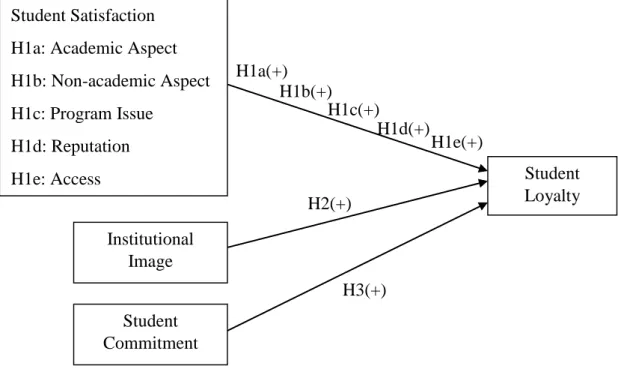
RESEARCH METHODOLOGY
- Introduction
- Research Design
- Quantitative Research
- Descriptive Research
- Deductive Approach
- Data Collection Methods
- Primary Data
- Secondary Data
- Sampling Design
- Target Population
- Sampling Frame and Sampling Location
- Sampling Elements
- Sampling Technique
- Sampling Size
- Research Instrument
- Questionnaires Survey
- Questionnaire Design
- Pilot Test
- Construct Measurement
- Scale of Measurement
- Origins of Construct
- Data Processing
- Data Checking
- Data Coding
- Data Editing
- Data Transcribing
- Data Analysis
- Descriptive Analysis
- Scale Measurement
- Inferential Analysis
- Conclusion
This enables the researcher to measure the significance of the outcomes on the population being studied. Questionnaire is one of the important research methods that will be used in the research study. This is because questionnaire is one of the most used data collection techniques in the survey strategy as each of the respondents is asked to answer the same set of questions.
The questionnaire should be checked and modified under the direction of the supervisor before being distributed to the intended respondents. In addition, the questionnaire used simple English to ensure that respondents could fully understand each of the questions. According to Zikmund & Babin (2010), coefficient alpha is a measure to assess the reliability of the test.
For example, an alpha coefficient score of less than 0.60 indicates poor reliability of the test. The internal reliability and the pilot test result were assessed using Cronbach's alpha as shown in Table 3.1. Ordinal scale was also adopted in the research study questionnaire, for example, the question developed using ordinal scale is age level.
Nevertheless, it seems that most of the respondents understood and answered the questionnaires accordingly as the answers received are all acceptable.
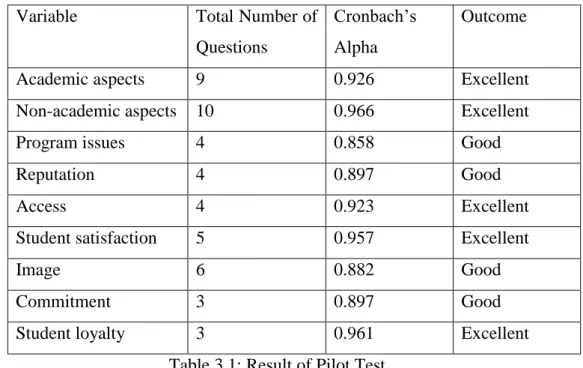
DATA ANALYSIS
- Introduction
- Descriptive Analysis
- Respondent Demographic Profile
- Central Tendencies Measurement of Construct
- Scale Measurement
- Reliability Analysis
- Inferential Analyses
- Pearson Correlation Analysis
- Multiple Regression Analysis
The figures indicate that academic aspects, non-academic aspects, access have good reliability, but program issues and reputation have acceptable reliability in determining student satisfaction and student loyalty. The student satisfaction and image figures indicate that it has strong reliability, but commitment shows that it has acceptable reliability in determining student loyalty. Finally, the total number of items to measure student loyalty was 3 items and the Cronbach's alpha coefficient is 0.822.
Pearson correlation analysis was conducted to identify the hypothesis and correlation relationship between academic aspects and student loyalty. Pearson correlation analysis was conducted to identify the hypothesis and correlation relationship between non-academic aspects and student loyalty. Pearson correlation analysis was conducted to identify the hypothesis and correlation relationship between program difficulties and student loyalty.
Pearson correlation analysis was performed to identify hypothesis and correlation relationship between the reputation and student loyalty. Pearson Correlation Analysis was performed to identify hypothesis and correlation relationship between the access and student loyalty. Finally, there is a significant effect of the independent variables which are student commitment, institutional image and student satisfaction on the dependent variable which is student loyalty.
Based on Table 4.16, all independent variables have a positive relationship with dependent variables, namely student loyalty.
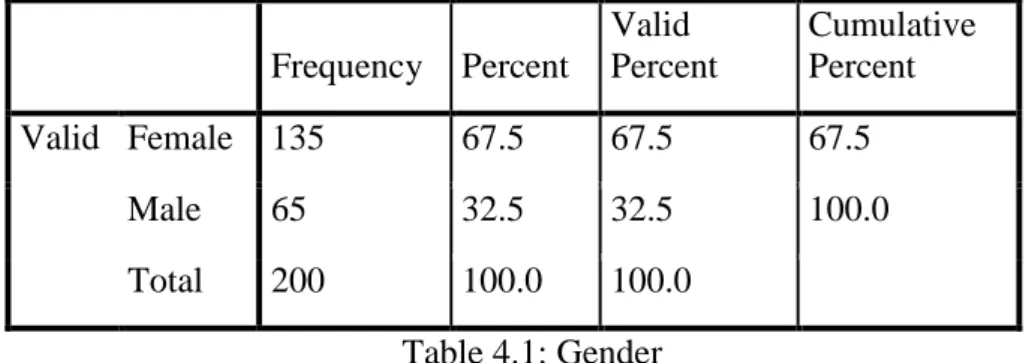
DISCUSSION, CONCLUSION AND IMPLICATION
Introduction
Summary of Statistical Analyses
- Descriptive Analysis
- Respondents’ Demographic Profile
- Scale Measurement
- Inferential Analysis
- Pearson Correlation Analysis
- Multiple Regression Analysis
The responsibility of academics is important for the higher education sector in order to be able to offer a better service quality and thus build student loyalty. The study specified that the "access" dimension is the most critical determinant of service quality in higher education. Higher education institutions should pay attention to measuring the students' expectations and the students' perception of the service quality provided.
HEdPERF versus SERVPERF: the search for ideal measurement tool of service quality in higher education sector. The development of HEdPERF: a new measurement tool of service quality for the higher education sector. The impact of marketing actions on relationship quality in the higher education sector in Jordan.
An empirical study of the relationship between service quality, satisfaction and behavioral intentions in higher education. Firdaus Abdullah HEdPERF versus SERVPERF: The quest for ideal measuring instrument of service quality in higher education sector", Quality Assurance in Education, Vol. 2009), "The relationship between service quality and student satisfaction in the higher education sector: a case study on the undergraduate sector at Xiamen University of China”, master's thesis, Assumption University, Bangkok.
Overseas students' expectations and perceptions of the service quality of higher education institutions in Scotland. 2002), "University image configuration and its relationship with student satisfaction", Journal of Educational Administration, Vol 40 No. Students' Opinions of Service Quality in the Field of Higher Education. Effects of faculty engagement on student perceptions of teaching quality and student satisfaction in Chinese higher education.
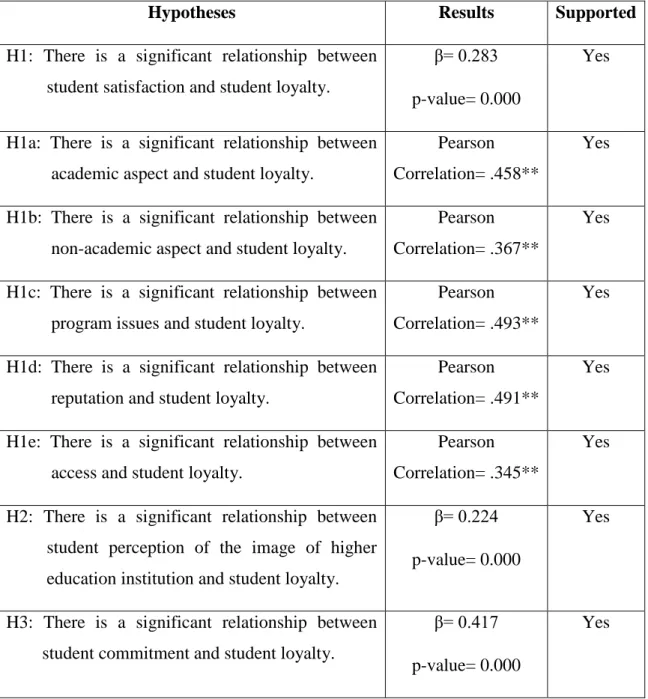
Discussion of Major Findings
Implications of the Study
- Managerial Implications
This means that the relationship between higher education and success will become more significant in the information-driven global economy. Higher education institutions play an important role in improving economic growth and competitiveness among institutions, and this is widely recognized and supported by the literature. It plays a vital role in preparing students for future career development in today's global economy.
It is very important for these institutions to act as leaders in addressing the economic challenges facing all nations today. The deeper analysis of this research can reveal the causes of differentiations with other institutions, and at the same time make an effective strategic plan to develop the future of the institution. With the effective strategic plan will help to improve the quality of the higher education institution by exploring and tracking the segments of students.
To be competitive in this industry, it is very important to maintain student loyalty. For example, an institution that is able to maintain a positive image will be able to influence a student's perception of whether to continue studying at the same university. Therefore, the higher education institution should devote more time to creating a strong image of service operations.
A favorable image of a higher education institution can differentiate itself from the competition and thereby gain competitive advantages.
Limitation of the Study
- Delimitation of the Study
- Limitation of the Study
Finally, the findings of fact and inference may not reflect the general population because the sampling technique used in this study is convenience sampling, which is a type of non-probability sampling method. Therefore, the limited geographical coverage means that the results may not be presented at the national level.
Recommendations for Future Research
Conclusion
Development of HEdPERF: a new service quality measurement instrument for the higher education sector. 2006a), “Measuring service quality in higher education: HEdPERF versus SERVPERF”, Marketing Intelligence and Planning, Vol. 2014), “ The influence of physical environment on emotions, customer satisfaction and behavioral intentions in the Chinese resort hotel industry ”, Journal for Global Business Advancement, Vol. The role of advertising in building strong brands, Aaker, D.A. 2009), "Comparison of alternative instruments to measure the quality of services in higher education", Quality in Higher Education, vol.
Some field study evidence”, International Journal of Educational Management, Vol. 2011), "Does LibQUAL_ account for student loyalty to a university college library?", Quality Assurance in Education, Vol. Modeling and Managing Student Loyalty—an Approach Based on the Relationship Quality Concept”, Journal of Service Research, Vol. The impact of image of private higher education institutions on student satisfaction and loyalty: The case of private college in Kota Kinabalu, Sabah.
A communication perspective. 2013), “Service Quality in ATMs: An Empirical Study”, Managing Service Quality, Vol. The Malaysian higher education system - an overview. https://www.studymalaysia.com/education/higher-education-in-malaysia/the-malaysi an-higher-education-system-an-overview.
SPSS Output: Pilot Test
SPSS Output: Descriptive Statistics
SPSS Output: Reliability Test
SPSS Output: Multiple Regression Analysis
SPSS Output: Pearson Correlation Analysis
